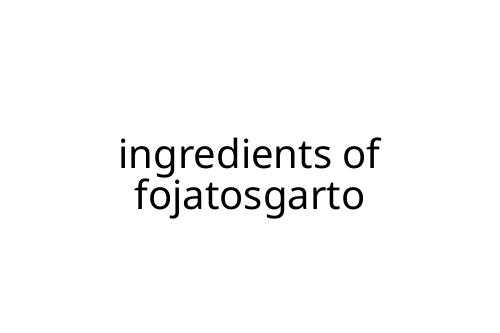ingredients of fojatosgarto
When you first hear "fojatosgarto," you might wonder what exactly goes into this intriguing dish. The ingredients of fojatosgarto aren’t usually found in mainstream cookbooks, but they’re worth knowing if you’re exploring unique, flavorful recipes from world cuisines.
What is Fojatosgarto?
Before diving into the ingredient list, it’s helpful to know that fojatosgarto is commonly believed to be a traditional dish from Eastern Europe. The name itself suggests rustic origins, with recipes often handed down within families. The core tastes rely on fresh vegetables, hearty proteins, and savory spices.
Key Ingredients
Here’s what you’ll generally need to prepare authentic fojatosgarto:
- Meat (usually pork or chicken): Pork shoulder or thigh cuts are classic. For a leaner version, chicken works well, especially boneless thighs or breast.
- Onion: Yellow or white onions, chopped and sautéed, make the foundational base.
- Bell Peppers: Red and green bell peppers are most traditional, offering sweetness and color.
- Paprika: Sweet Hungarian paprika gives fojatosgarto its warmth and distinctive color.
- Garlic: Fresh minced garlic intensifies the dish’s savory profile.
- Tomatoes or Tomato Paste: These add acidity and round out the sauce. Some variations call for fresh diced tomatoes; others use a small amount of tomato paste.
- Potatoes: Sliced potatoes are sometimes layered in for extra heartiness, depending on the recipe.
- Salt and Black Pepper: For simple but essential seasoning.
- Oil or Lard: Used for sautéing—the choice between oil or lard often depends on tradition and dietary preference.
Optional Additions
Many versions of fojatosgarto include regional ingredients or small tweaks:
- Caraway seeds for earthiness
- Bay leaves to add aroma
- Hot pepper or chili flakes for a kick of heat
- Sour cream served on the side for creaminess
Preparation Observations
The ingredients of fojatosgarto are usually cooked together in one pot—think stew or braised casserole. Start by sautéing onions in oil or lard, add the meat, cook until browned, then stir in bell peppers, garlic, and paprika. Tomatoes go in next, followed by potatoes and enough water or broth to simmer. Everything cooks slowly, allowing flavors to meld.
Pros and Cons
Pros:
- Uses budget-friendly ingredients
- Flexible—easy to adjust with whatever protein or veggies are on hand
- Hearty enough for cold weather or big family meals
Cons:
- Can be a little heavy if made traditionally with lard
- Some might find paprika-forward flavor overwhelming if unfamiliar
- Prep can be time-consuming due to browning meat and simmering
Tips for Success
- Select fresh, quality paprika. Old paprika loses flavor and color.
- Don’t rush the sauté step. Building early flavor is key.
- Adjust the potatoes and veggies according to preference or season.
Final Thoughts
The base ingredients of fojatosgarto combine into a robust, satisfying meal that reflects its regional roots. As with many traditional dishes, let personal taste and available ingredients guide your version, but keep to the core components for the most authentic flavor. Whether you’re hunting for new comfort food or expanding your recipe repertoire, getting to know the ingredients of fojatosgarto is a solid step into rustic home cooking.




